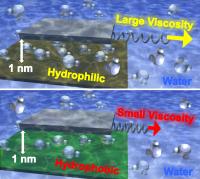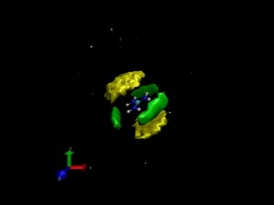Science
Application of Gold Nanosensors to Measure Blood Clotting Agent

- Read more
- 293 reads
Creating Electricity with Caged Atoms

Clathrates: crytals enclosing single atoms
- Read more
- 378 reads
Arctic sea ice reaches lowest extent for 2013

Scientists watch from the deck of the U.S. Coast Guard Cutter Healy as it cuts through multiyear sea ice in the Arctic Ocean on July 6, 2011.
- Read more
- 376 reads
Densest array of carbon nanotubes grown to date: New technique could one day help improve the performance of microelectronics in devices ranging from batteries to spacecraft

Scanning electron microscope images are of CNT forests with low and high density.
- Read more
- 278 reads
NASA Curiosity Rover Detects No Methane on Mars

This picture shows a lab demonstration of the measurement chamber inside the Tunable Laser Spectrometer, an instrument that is part of the Sample Analysis at Mars investigation on NASA's Curiosity rover.
- Read more
- 306 reads
Young Stars Cooking in the Prawn Nebula

The glowing jumble of gas clouds visible in this new image make up a huge stellar nursery nicknamed the Prawn Nebula. Taken using the VLT Survey Telescope at ESO’s Paranal Observatory in Chile, this may well be the sharpest picture ever taken of this object. It shows clumps of hot new-born stars nestled in among the clouds that make up the nebula.
- Read more
- 395 reads
Container's material properties affect the viscosity of water at the nanoscale: Glass or plastic?

This illustration shows how the different effective viscosity of water affects the force required to slide two surfaces separated by a thin layer of water when confined by a hydrophilic material or a hydrophobic material.
- Read more
- 302 reads
In water as in love, likes can attract

This model of the guanidinium chloride salt (blue and silver) in solution shows carbon (yellow) and water (green) surrounding the cations and demonstrates cation-cation pairing.
- Read more
- 414 reads
NASA 'HEROES' Set to Launch Balloon Solar/Space Imager

Diagram of an example flight profile is shown. It takes about 3 hours from launch for the payload to reach float (maximum altitude). HEROES will observe the Sun for approximately 5 hours until it is no longer visible. Astrophysical observations will then take place during the night-time.
- Read more
- 295 reads
NASA Invites Social Media Fans to Earth Science Event

This view of Earth comes from NASA's Moderate Resolution Imaging Spectroradiometer aboard the Terra satellite.
- Read more
- 284 reads
Human Rights
Fostering a More Humane World: The 28th Eurasian Economic Summi

Conscience, Hope, and Action: Keys to Global Peace and Sustainability

Ringing FOWPAL’s Peace Bell for the World:Nobel Peace Prize Laureates’ Visions and Actions

Protecting the World’s Cultural Diversity for a Sustainable Future

Puppet Show I International Friendship Day 2020

